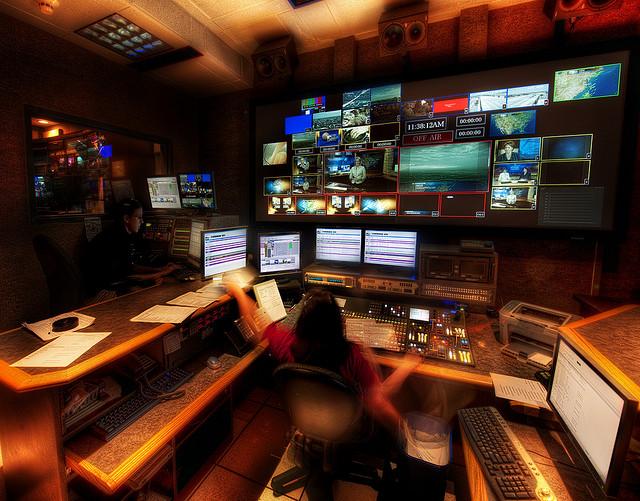I was thinking of a story the other day, one where something bad was going to happen.
The fallout would be severe, with monetary damages and more than 1 person losing their job.
The people involved (let's go Dragnet-style and say: "the names have been changed to protect the innocent.") were doing a battery change out on a UPS (Uninterruptible Power Supply) that serves a newsroom/broadcast studio.
They were following procedure in that the proper steps were taken to transition from bypass power to UPS power, keeping the electricity flowing to the cameras, producers' booth and broadcast equipment.
The only problem was, they were performing the transition during a live TV broadcast, something that was strictly against policy. The flip of a wrong switch at the wrong time could have left the entire studio dark, and countless viewers with a blank screen.
Not good. Not good at all.
Luckily (I don't believe in luck, but there must have been some higher power at work here), these guys didn't flip the wrong switch, and they transitioned the power back to the UPS smack in the middle of the live broadcast.
And the lights didn't even flicker. It could have gotten very ugly, very fast.
But what does this have to do with access floors and newsrooms?
If you've never been to a broadcast studio, it's an amazing sight. Everything in front of the camera is pristine. Everything is pretty, from the set to the people reading you the news. Behind the cameras, however, things aren't often so nice and neat.
There are wires and cables everywhere. Lights are flashing, producers have their hands at the controls. The back office usually has rows of cubicles where researchers, reporters, producers and designers work towards a singular goal: getting timely information that viewers need throughought the day.
The absolute last thing you need to worry about are the cables. The power cables, ethernet cables and video and signal wires. They help form the physical infrastructure that lets your team do what they do each day. They're very important, but they're just cables, right?
This is what we do every day. We have a passion for raised floors.
We know it's hard to get excited about a floor and running cables inside of it. That's OK, we get it.
What we get excited about, and hope you do too, is when you find out how access floors can make your job so much easier.
If you're familiar with raised floors and don't like the idea of tall, drab, industrial floors taking up precious space in your building, check out our line of "cable management access floors".
They're different because they're only a few inches high, and they have built in cable management trenches. It saves time and money.
You know, we've designed and installed access floors in all types of buildings, from data centers to office spaces, technology centers, libraries, hospitals, retail stores and more. They all have power and data cabling requirements. But few of those applications have the cable density requirements of a TV newsroom.
If you are a facilities manager or engineer for a TV station, broadcast studio or radio station, we can help manage your cable problem, so you can get on to bigger and better things.
If you have an older facility and are worried installing an access floor is too big of a project, get in touch with us and share your concerns. Yes, we work on a lot of new buildings, but we do plenty of rennovation work as well.
At Netfloor USA, we believe in making your job easier, and that starts from the first conversation we have with you. So please, feel free to give us a call (844-638-3566), email or use our contact form, and let's see what we can do together!
Image Credit: Trey Ratcliff via Flickr Creative Commons


 Facebook
Facebook Twitter
Twitter Google+
Google+ LinkedIn
LinkedIn